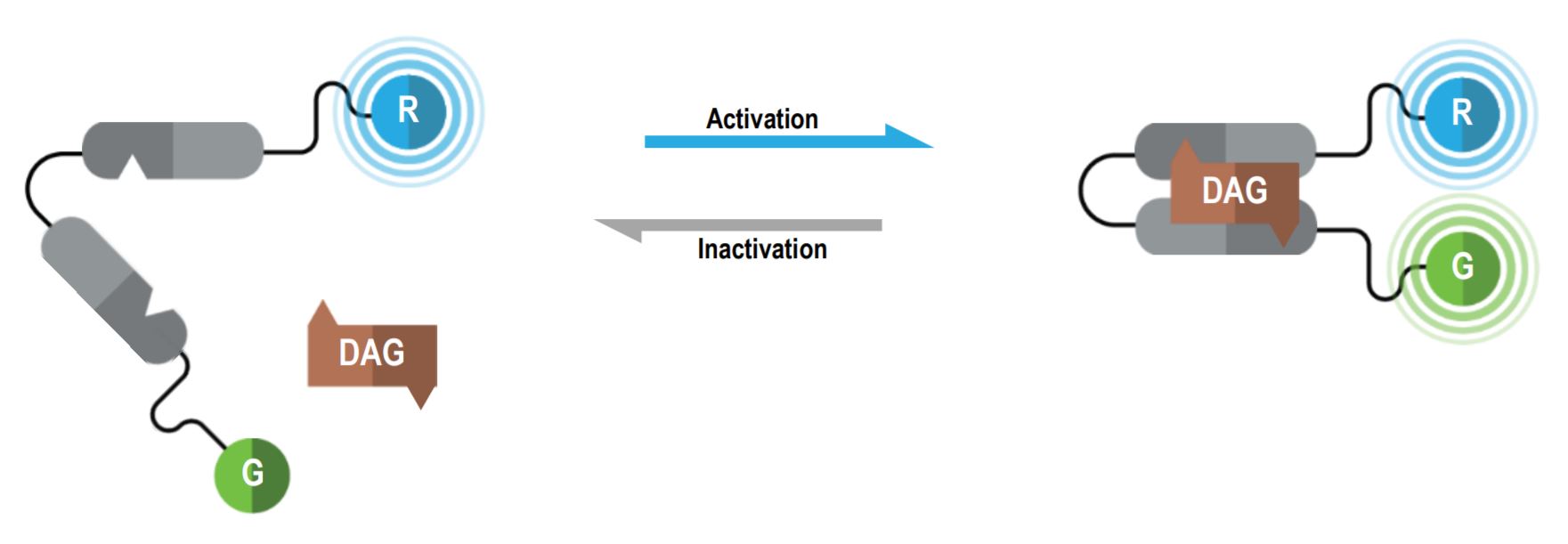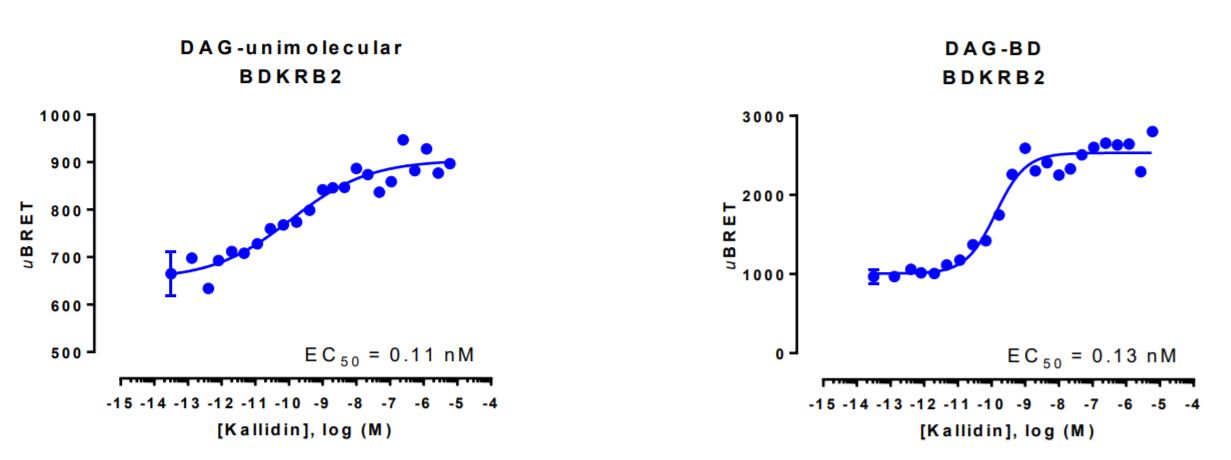Secondary messenger monitoring: The Diacylglycerol biosensors
How the biosensors work
The principal effector of the Gαq/11 pathway is phospholipase C-β (PLCβ), which catalyzes the cleavage of membrane-bound phosphatidylinositol 4,5-biphosphate (PIP2) into the second messengers inositol (1,4,5) trisphosphate (IP3) and diacylglycerol (DAG). Binding of IP3 to its receptor on the endoplasmic reticulum (ER) results in the release of ER calcium stores. Increased concentrations of calcium and DAG lead to the activation of protein kinase C (PKC). Consequently, biosensors monitoring DAG levels and PKC activity have been developed as distal measures of G protein-coupled receptor (GPCR)-downstream Gαq/11 activation.
Two versions of DAG biosensors have been developed:
1) The unimolecular DAG sensor consists of “core region” containing C1b DAG-binding domains (C1b DBDs) fused via a flexible linker. This core region is tagged with Renilla luciferase (RLuc; R in the figure below) at its N-terminus and green fluorescent protein (GFP; G in the figure hereafter) at its C-terminus. Binding of DAG to the core region results in the interaction of C1b DBDs leading to an increase in the physical proximity between terminal RLuc and GFP tags. As a result, DAG production translates into an increased BRET efficiency, the magnitude of BRET signal being directly proportional to intracellular DAG levels.

2) The multimolecular DAG biosensor was designed to monitor the recruitment of an RLuc-tagged version of the previously described core region to the plasma membrane. Following GPCR activation, generation of DAG to the plasma membrane leads to an increase in BRET signal.

Diacylglycerol production data generated with the Bradykinin B2 receptor

HEK293 cells were transfected with a receptor coding plasmid (the human bradykinin receptor B2 (BDKRB2)) as well as plasmids coding for the unimolecular (left) or multimolecular (right) DAG biosensor. On the day of BRET, cells were rinsed with assay buffer, incubated with coelenterazine and increasing amounts of kallidin for 10 minutes and BRET subsequently measured.